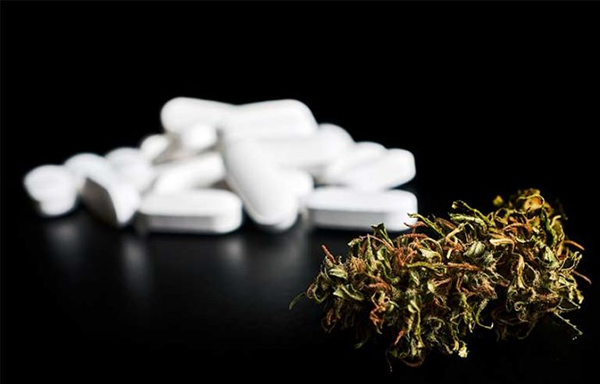
Drug to calm down | LOOKAH
A new “comedown drug” may be on the horizon to treat people who get too high.
A pharmaceutical company is developing a new drug for people who get so high from smoking marijuana that they seek medical help — and company executives say the results so far are exciting.
Anebulo Pharmaceuticals is currently developing the first-of-its-kind drug, ANEB-001, to treat what is known as acute cannabinoid intoxication, or ACI, where a person becomes so large that they feel like they are losing control and sometimes end up in the emergency room.
In clinical trials, the drug has shown that it can combat the effects of problematic high doses of THC safely and with few side effects, said company founder Dr. Joseph Lawlor at a briefing for media and investors on September 26.
A cannabinoid receptor blocking molecule
ANEB-001 is a small molecule that can block the cannabinoid receptor type 1 (CB1) in the brain, to which THC binds and thus produces the psychoactive high.
ACI has appeared on the healthcare industry's radar because marijuana is legal for medical purposes in 39 states and for adult recreational use in 19 states.
Anebulo CEO Simon Allen said patients typically included first-time users, people who had unknowingly eaten THC gummies (sometimes children), and general users who had taken more than the intended dose – which varies from person to person.
It is currently undergoing clinical trials in the Netherlands.
The trials were conducted by the Netherlands Centre for Human Medicine Research. In Part A of the now completed test, subjects took 10.5 mg of THC and were given either 50 mg or 100 mg of ANEB-001 or a placebo. They were then subjected to a series of tests that included measuring the “sway” of the body while the subjects closed their eyes and stood in place for two minutes.
In addition to increased alertness, those who received the drug also showed a significant reduction in “high feeling” scores and body sway compared to the placebo group.
For Part B, researchers flipped the experiment, doubling the THC dose to 21 milligrams and lowering the dose of the test drug to 10 and 30 milligrams. So far, Cundy said, the results are equally encouraging. So far, Part B consists of two groups of up to 15 people each, and the company plans to recruit at least four more groups before moving on to the next phase of the trial.
The next step after the study: obtaining FDA approval
The drug typically relieves the effects of the high feeling within an hour. The next phase will test ANEB-100 one hour after subjects ingest THC to better simulate real-world conditions. After testing, they will seek FDA approval to distribute the drug in emergency rooms across the United States by 2025.
Anebulo officials say the stakes are high. Emergency rooms are overcrowded and expensive. ACI treatment in psychiatric hospitals costs up to $50,000. “That's a lot of money,” Allen said. “So we believe that quickly eliminating all of these symptoms would not only benefit the patient, but would also be a huge win for the health care system.”
Ideas born from news reports
Lawlor said he came up with the idea for the drug after reading an article in a medical journal. The article reported on a children's party where some attendees unknowingly ate THC gummy bears. “I thought if we could block the CB1 receptor, we would have a drug to treat this THC poisoning,” he said. “We developed Anebulo based on that. ANEB-001 is effective, it's specific … and it's rapidly absorbed.”
ACI is rarely life-threatening and symptoms usually resolve within a few hours, so is there really a need to develop a drug to treat it? Lawlor compares it to a migraine, and people recover over time – “But we wouldn't dream of not treating someone who comes to the emergency room with a migraine. The same is true for marijuana poisoning. The big difference is that there is no approved antidote.”
This could change soon.

Post a comment: